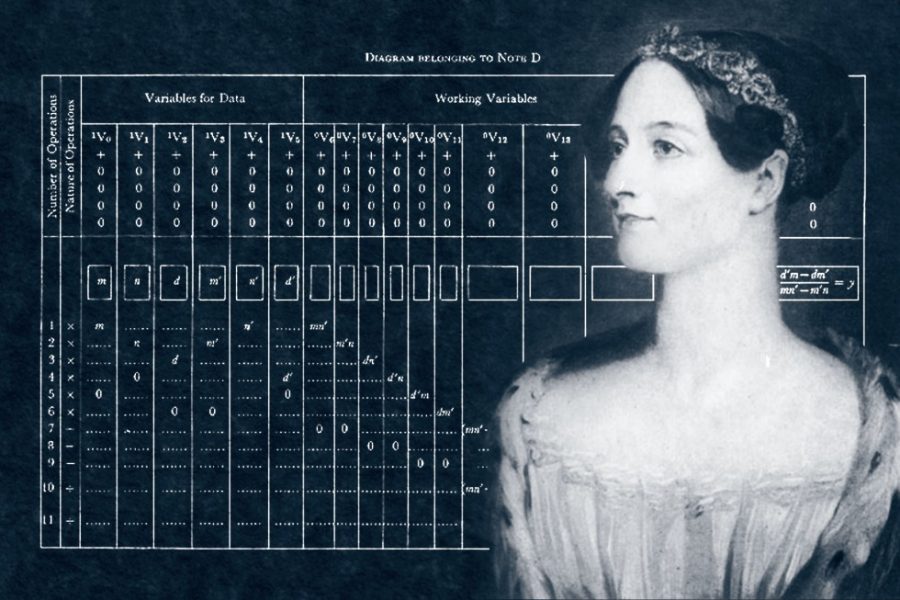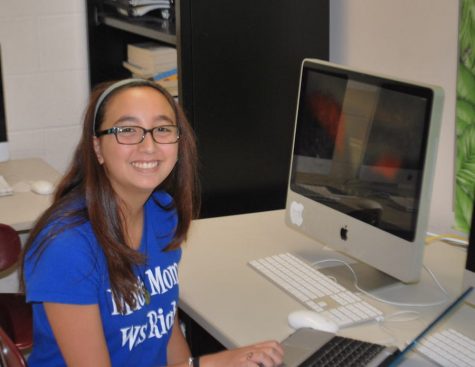Woman of the Month: The Countess Who Created The Computer Program
https://roberthorvat30.files.wordpress.com/2014/08/ada-lovelace-iq-980×653-au-en.jpg
Using her knowledge regarding mathematics, Ada Byron created the first computer program.
September 8, 2019
Woman of the Month is a column dedicated to educating people about influential women of the past. Every month, I will highlight a specific woman and discuss how she has influenced our world.
For September, we will be exploring how Augusta Ada Byron, known by many in the mathematics community as Ada Lovelace, opened a world of innovations with her creation of a computer program.
Ada Byron, Countess of Lovelace, was born to an upper-class London family. Shortly before her birth, Ada’s father became violently hostile, destroying the furniture around the room. A month following Ada’s birth, Lady Anne Byron, Ada’s mother, fled with Ada to live with her parents.
Lady Byron’s unconventional educational tactics and views helped Ada to take an interest in mathematics and science. Fearful that Ada shared the same violent tendencies as her father, Lady Byron pushed Ada to excel in science and math, with the hope that it would inhibit Ada’s romanticism and supposed inherited lack of self-control.
By the age of five, Ada was able to spell two-syllable words and calculate six rows of numbers. She had many tutors, including astronomer- and the first female to be chosen for Britain’s Royal Society- Mary Somerville, who aided in the development of her education. The exposure to influential people of her time enabled Ada to possess a broad understanding of the world she was living in.
When Ada was seventeen, she was introduced to Charles Babbage, the inventor of the predecessor of the modern computer. Intrigued by his analytical engine, Ada pursued a friendship with Babbage. Ada’s relationship with Babbage enabled her to garner connections with high ranking mathematicians such as Augustus de Morgan, a mathematics professor at the University of London who took Ada under his wing. She flourished under de Morgan, whose mentorship enabled her to pursue advanced studies in mathematics.
In 1840, a french description of the mathematic workings behind Babbage’s machine was published in a Swiss journal. With Babbage never formally publishing a report on how the calculator worked, Ada was persuaded by the pioneer of the telegraph, Charles Wheatstone, to translate the French document into English.
As Ada translated the document, observing a shortage of information regarding the usage and application of the computer, she incorporated some of her annotations and concepts. Along with those comments was the first computer program ever written. Inventing the concept of a subroutine, a set of directions created to carry out a frequently used operation, Ada provided a detailed explanation of not only how the computer functioned, but how it might pertain to the world. She included thorough notes on how to best operate the machine, allowing the reader to acquire a deeper comprehension of the workings of it. Looking past the math, Ada provided the world with its first computer program, changing the course of the world forever.
Ada’s computer program influences my everyday life. Without Ada’s invention of the first computer program, I would never have access to the complex technology available today. Every student in our school is carrying around a Chromebook and every action they perform utilizes a computer program. But, not only that, the idea that a woman would have the ability to accomplish such an amazing feat and gain recognition for her actions conveys a powerful message to young women hoping to follow a path in math and science. Ada set a precedent for young girls and women to make contributions to the math and science world. A famous English proverb states that “Behind every great man, there is a great woman,” and this statement rings true for Ada as well. While Charles Babbage might have been the first person to create a complex computer, without the hard work and devotion of Ada, seen through her conception of the first computer program, that device would not hold the same significance that it does today. With her hard work and the recognition of that work, Ada Byron inspires the young women of her time and ours to rise above the standards set by our society.









Jazmin Rodriguez • Sep 10, 2019 at 6:18 pm
Love the article, and what a great idea for a column! Looking forward to more articles.
Christine Berthold • Sep 10, 2019 at 5:50 am
Great article. How is it I never heard of this woman and her accomplishments? My daughter and I will be faithfully following your column. It is very well written and a joy to read. Keep it coming!
Lewin June • Sep 9, 2019 at 7:24 pm
What an interesting article. What were some of your sources. I’m looking forward to the next bio.